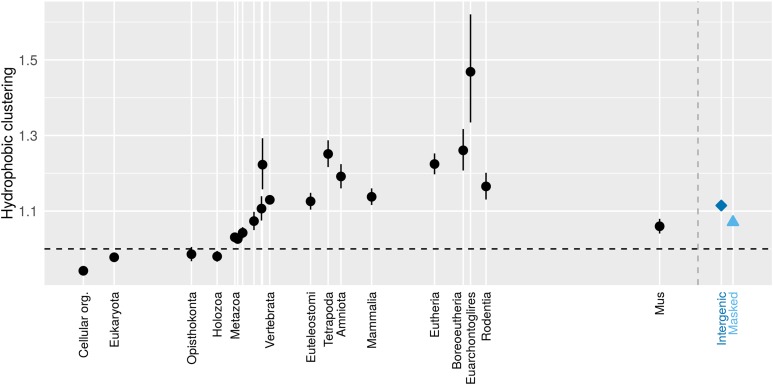Figure 5.
Clustering initially follows that of its raw material, and evolves rapidly upward at first, but then decays downward extremely slowly, indicating a long-term direction of evolution. Only the oldest genes have hydrophobic amino acids spread out from each other, as previously reported; young genes have clustered hydrophobic amino acids. Back-transformed central tendency estimates ± 1 SE come from a linear mixed model, where gene family and phylostratum are random and fixed terms, respectively. The x-axis is the same as for Figure 2.

